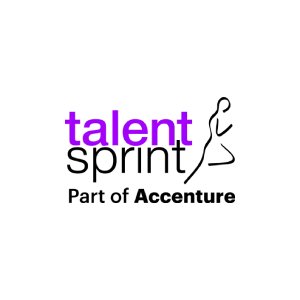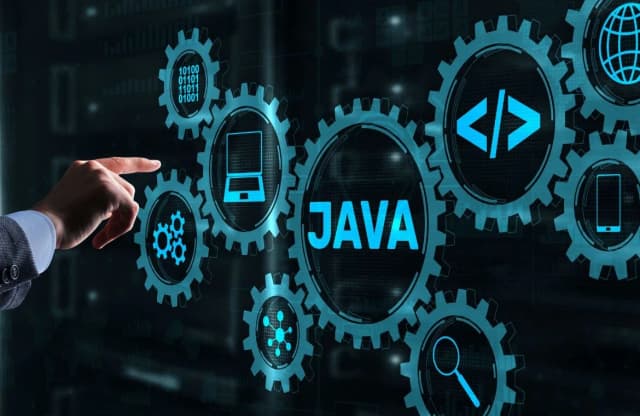Frontend vs Backend vs Full Stack Development: What’s the Difference?

Web development offers amazing opportunities. There are over 1.1 billion websites, and there is a projected job growth of 23% in 2031 as compared to 2021. When choosing a web development career, professionals have to choose between frontend, backend, and full stack development. All three come with different salary ranges, and roles and responsibilities.
Money isn't everything when picking your path; it's all about what interests you. Frontend developers shape what users see and experience. Backend developers build the core systems that power applications. Full stack developers blend both skills into one role. More companies now want versatile professionals who can handle both client-side and server-side programming. This makes understanding these roles crucial.
This piece breaks down the main differences between front end, back end, and full stack development. You'll learn what fits your interests and career goals best, regardless of starting fresh or switching careers.
Frontend Development: Creating What Users See
Frontend development breathes life into websites by creating everything users see and interact with in their browsers. Backend systems work behind the scenes, while frontend developers craft the visual interface, interactive elements, and the overall experience that keeps visitors coming back.
Frontend development depends on three simple technologies:
- HTML: Structures the content and defines what elements appear on a webpage
- CSS: Controls presentation, styling, and responsive design across different devices
- JavaScript: Adds interactivity, dynamic content updates, and complex functionality
According to Sarah Mitchell, Senior Developer at WebStack Solutions, “Frontend developers are digital architects who translate design concepts into functional code.”
The toolkit for frontend developers goes beyond the basics. Some commonly use:
- CSS preprocessors like Sass
- JavaScript frameworks such as React, Angular, or Vue.js
- Version control systems like Git
In frontend development, professionals need to maintain consistency across browsers, devices, and screen sizes. They have to work closely with UI/UX designers to implement visual elements and transform designs into code. Other than technical skills, frontend developers need to understand design principles, SEO best practices, and accessibility standards.
Backend Development: Powering the Application
"Backend development gives you tremendous power to shape how applications fundamentally work," explains Dr. Elena Rodriguez, CTO at TechFusion.
A powerful engine of backend development powers every sleek user interface and builds the foundation of web applications. Users never see server-side programming, but they rely on it each time they interact with websites or applications.
Operations handled by backend developers:
- Data storage
- Business logic implementation
- Server processing
- Managing APIs to aid communication
- Database management
- Primary tools used - Python, Java, PHP, JavaScript (Node.js), C#, Ruby
Backend responsibilities extend beyond coding:
- Building resilient server architecture and system logic
- Implementing security measures and access controls
- Developing APIs for frontend communication
- Troubleshooting and debugging applications
- Optimizing performance and scalability
Backend development demands strong analytical thinking and problem-solving skills. Databases and server technologies continue to evolve. Developers must update their knowledge to maintain secure, efficient, and adaptable applications that handle increasing loads and user traffic effectively.
Full Stack Development: Mastering Both Worlds
Full stack development represents a detailed approach to web application creation that includes both frontend and backend development processes. Specialists focus on one side of development, but full stack developers can work with the entire technology stack. This ability lets them create complete web applications on their own.
"Full stack developers are the Swiss Army knives of web development," explains David Chen, CTO at TechNova Solutions.
These versatile professionals become skilled at frontend technologies like HTML, CSS, and JavaScript. They also develop expertise in backend languages such as Python, Ruby, PHP, and JavaScript. Their knowledge extends to database management systems like MySQL, MongoDB, and PostgreSQL.
Full stack developers bring notable advantages to projects:
- Cost efficiency: Companies can reduce staffing needs by hiring versatile developers who handle multiple aspects of development
- Simplified processes: Projects progress faster with fewer communication barriers between frontend and backend teams
- Better problem-solving: Their detailed understanding helps them spot bottlenecks and inefficiencies quickly
- Project ownership: They can take complete responsibility for projects from conception to completion
So, it is apparent the full stack developer adds more value to the organization and; thus, is expected to enjoy greater job security and career flexibility.
Frontend Development vs Backend Development vs Full Stack Development
Understanding the differences between frontend, backend, and full stack roles helps developers make better career choices. These three specializations have unique functions in web development and work together seamlessly.
Here’s a comparison table to explore what is the difference between frontend, backend, and full stack development:
| Aspect | Frontend Development | Backend Development | Full Stack Development |
| Core Technologies | - HTML - CSS - JavaScript - React/Angular/Vue.js - CSS preprocessors (Sass) | - Python - Java - PHP - Node.js - C# - Ruby | Combines all frontend and backend technologies |
| Main Focus | User interface and experience | Server-side operations and data management | Complete application development |
| Key Responsibilities | - Implementing visual designs - Creating interactive elements - Ensuring cross-browser compatibility - Responsive design | - Database management - Server architecture - API development - Security implementation | - End-to-end development - Full project ownership - System integration - Complete architecture design |
| Career Advantages | Specialization in user experience | Deep technical expertise | - Better job security - More career options - Broader project opportunities - Affordable for employers |
Conclusion
Development paths come with their own benefits, and full stack development emerges as an excellent career choice. The tech industry shows a growing need for developers who can handle both client-side and server-side development effectively.
The current market needs and growth potential make full stack development a smart career move. Your development journey can start today - check out this full stack development course to become skilled at frontend and backend technologies.
Frequently Asked Questions
Q1. What are the main differences between frontend, backend, and full stack development?
Frontend development focuses on creating user interfaces, backend development handles server-side operations and data management, while full stack development combines both. Frontend developers use HTML, CSS, and JavaScript, backend developers work with server-side languages and databases, and full stack developers are proficient in both areas.
Q2. Is full stack development more advantageous than specializing in frontend or backend?
Full stack development offers greater versatility and job security. Full stack developers can handle entire projects independently, adapt to various roles, and are often valued for their comprehensive understanding of web applications. However, specializing in frontend or backend can lead to deeper expertise in those specific areas.
Q3. How do salaries compare between frontend, backend, and full stack developers?
On average, backend developers earn the highest. The entry-level salary of a backend developer is anywhere between ₹3 to ₹10 lakhs per annum. The average salary of frontend developers ₹3 to ₹7 lakhs per annum, while a full stack developer may earn ₹4 to ₹8 lakhs per annum. However, salaries can vary based on experience, location, and specific skills.
Q4. What skills are essential for each type of developer?
Frontend developers need proficiency in HTML, CSS, JavaScript, and frameworks like React or Angular. Backend developers require skills in server-side languages, database management, and API development. Full stack developers must possess both frontend and backend skills, along with an understanding of how different components integrate.
Q5. Which development path is best for career growth?
Full stack development often provides the most career flexibility and growth opportunities. It allows developers to work on diverse projects and adapt to changing market demands. However, specializing in frontend or backend can lead to becoming an expert in those fields, which is also valuable. The best path depends on individual interests, skills, and career goals.

TalentSprint
TalentSprint is a leading deep-tech education company. It partners with esteemed academic institutions and global corporations to offer advanced learning programs in deep-tech, management, and emerging technologies. Known for its high-impact programs co-created with think tanks and experts, TalentSprint blends academic expertise with practical industry experience.



